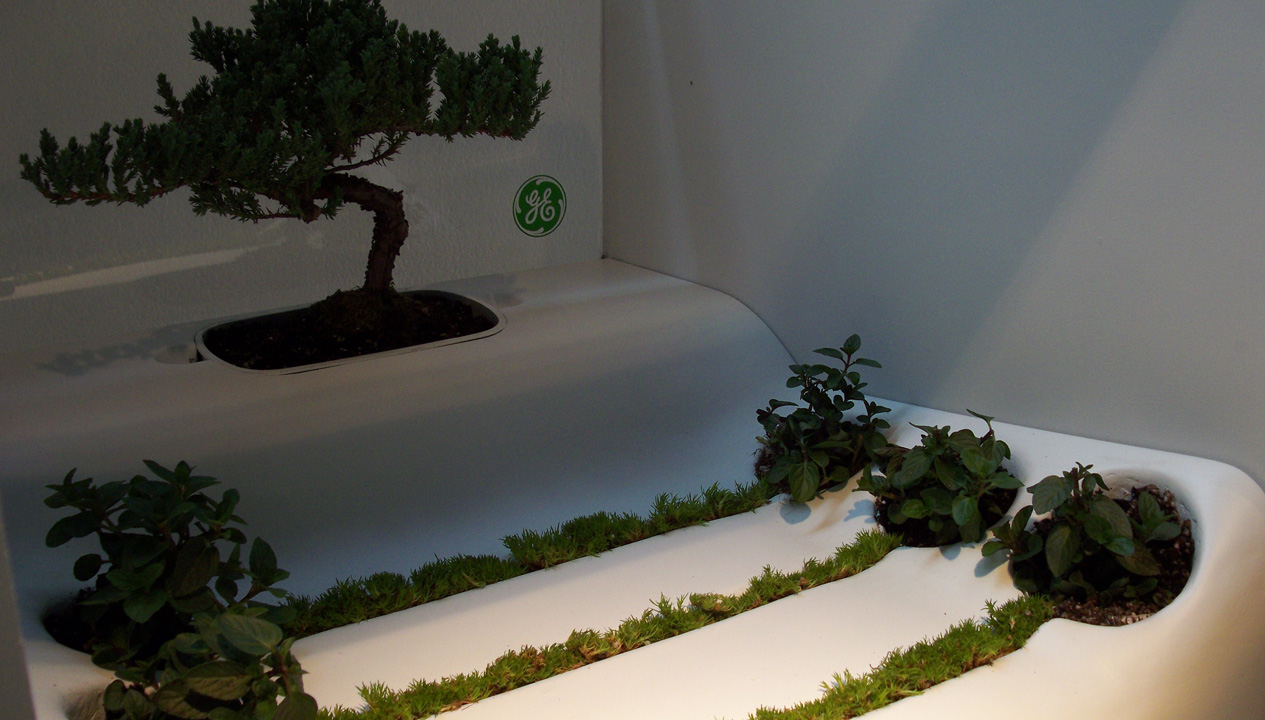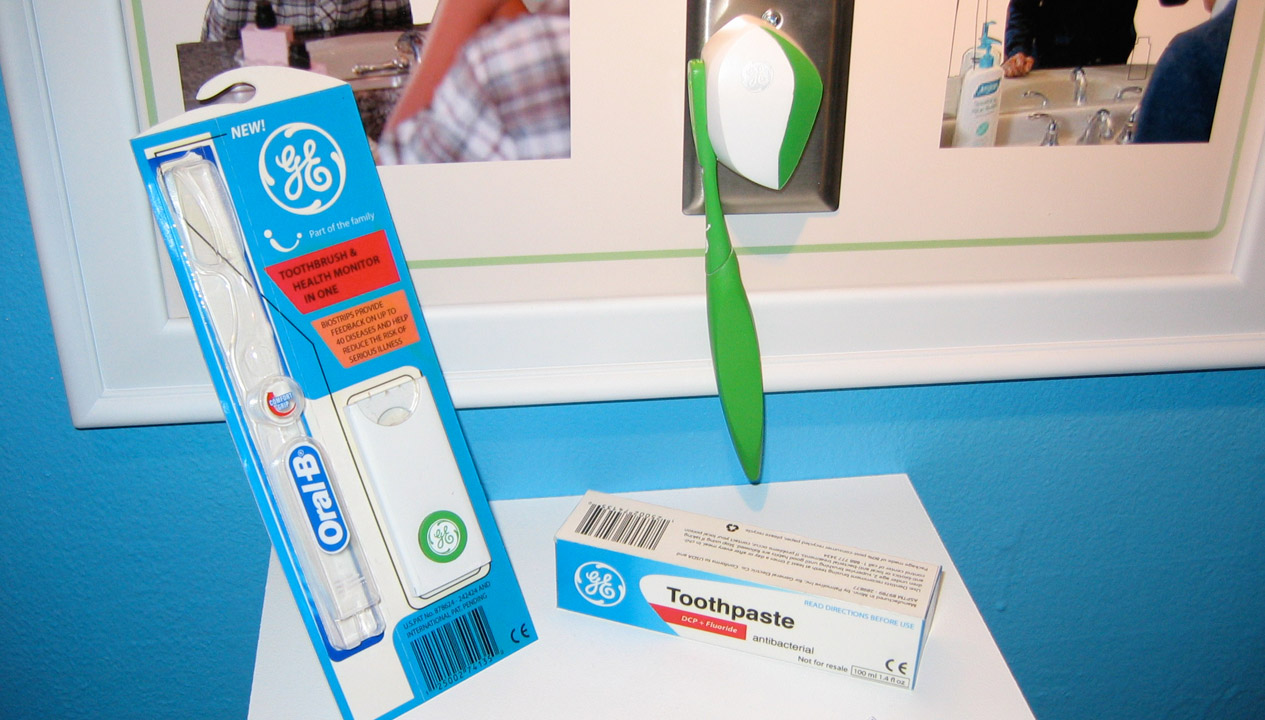GE Healthcare: Future Healthcare Solutions for the Aging
- Global Health

Fall 2007
Building on the Healthcare Anywhere theme, GE Healthcare returned to ArtCenter for a second collaboration with Designmatters and the Product Design department which resulted in a Fall 2007 transdisciplinary studio involving students from the departments of Environmental Design, Graphic Design, and Product Design. The lead faculty were James Meraz, Environmental Design and John-Rhys Newman, Product Design. The goals was to explore systems and products that improve the quality of life for the elderly in multiple environments.
Design Brief
The focus was to envision solutions for healthy living for the aging “baby boomer” populations, both at home and in assisted care living facilities. The teams were asked to improve their quality of life and design with an eye to the future.
Research Methodologies
The following guest experts from the fields of gerontology, architecture, nursing, and design, guided the students’ research and provided valuable insight and feedback from the beginning to end:
• Patricia Moore, President of MooreDesign Associates
• Sandy Atkins, Associate Director of Partners in Care Foundation
• Victor Regnier, Professor in the School of Gerontology and the School of Architecture at USC
• Gwen Uman, Partner and co-founder of Vital Research
Key field research, including a tour of a local senior living facility served as a basis for the students’ understanding of current conditions, perceptions, and needs.
“Global aging requires an aggressive and inclusive design response. The creative passion displayed by Art Center’s students has convinced me that a future free from fear about tomorrow is more than a possibility, but clearly a probability, by design!”
–Patricia Moore, President, MooreDesign
“What makes these projects so interesting is that they examine the role of design in dealing with a broad range of important social issues–like medication reminders, intergenerational communication, aging in place and post-retirement wanderlust. The team projects benefited from an amazing convergence of collective intelligence, insight and intuition.”
–Victor Regnier, Professor in the School of Gerontology and the School of Architecture at USC
Overall Outcomes
While the primary goal was to improve the lives of the aging population, the design explorations quickly underscored the larger application and benefits of these designs for a wide spectrum of users. The solutions’ reach aimed at enhancing an individual’s entire life span, with an emphasis on quality of life rather than age.
Project Outcomes
 close
close
Sensorial
Read more
This group approached the challenge of home healthcare in 2017 by investigating the idea of “home” as a series of sensory experiences. Focusing on pharmaceutical and vitamin distribution for a preventative approach to healthcare, the Sensorial portfolio consists of three products to enhance the ritual of taking prescription medications by emphasizing quality, product longevity and humanism.
 close
close
Home is Family
Read more
This team created a set of interfaces that provide a connective experience for grandparents and grandchildren, whether they live in the same household or communicate remotely. Consisting of six interrelated home product designs (the blo-mo, o-cami, cross, recorder and toothbrush), this project transforms daily activities into gaming experiences that provide preventative healthcare and facilitate meaningful bonds between family members.
 close
close
Grow Life, Love Life
Read more
This idea is centered on the basic human experience of nurturing, and consists of three window panels for growing plants, or “life-scapes.” This series aims to provide preventative health maintenance for the “baby boomer,” by focusing on the holistic health benefits of co-habitation with plants, growing one’s own food, and sharing healthy living and eating habits with their community.
 close
close
The Nomadic Life
Read more
This team developed a mobile healthcare system for the year 2017 by creating a specialized, highly-functioning home for the “nomadic baby boomer.” Its design aims to facilitate communication, medication storage/distribution, and a strong sense of community for aging populations with a lifestyle of mobile living. Systems and products that improve the quality of life for the elderly in multiple environments.